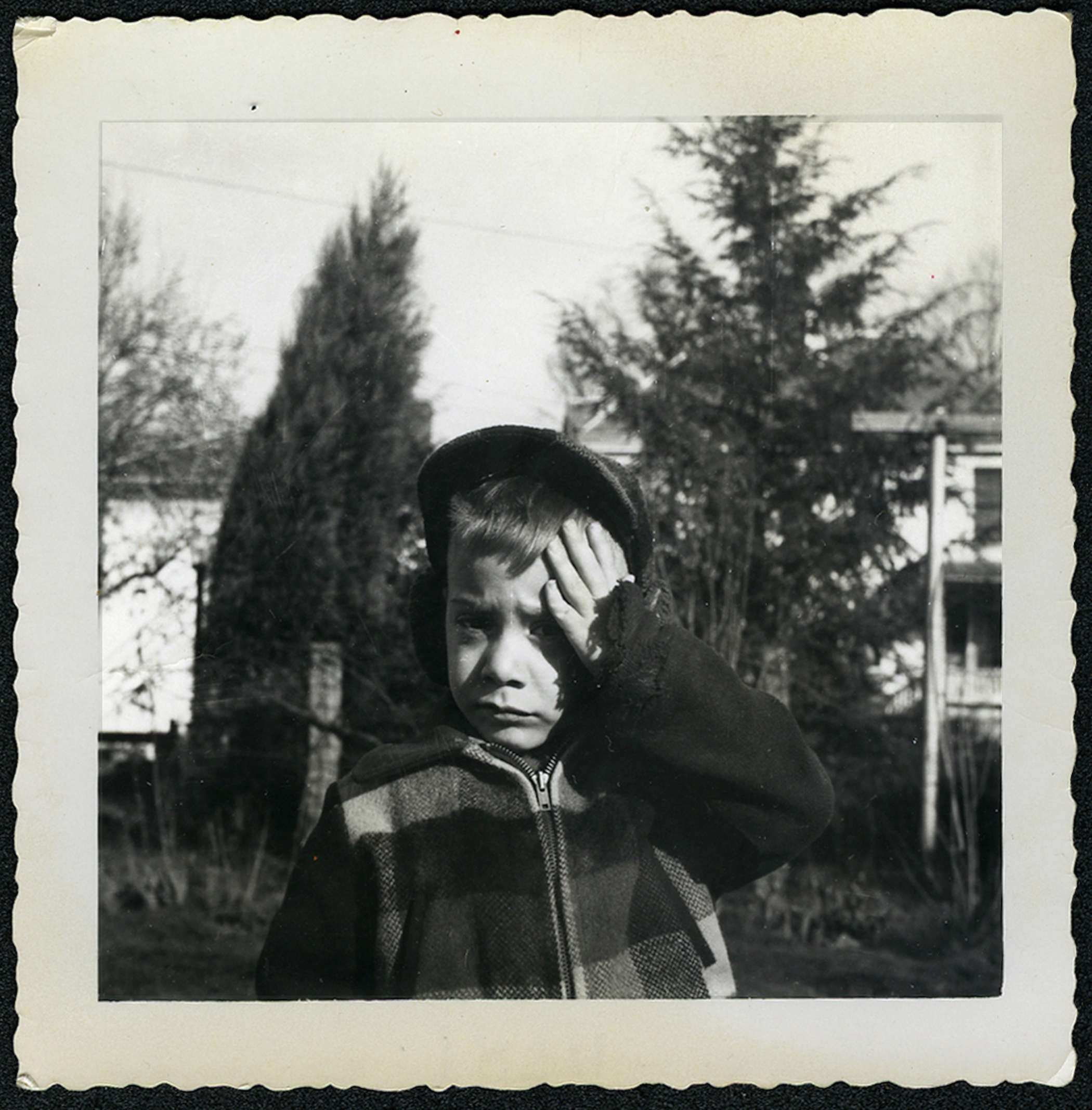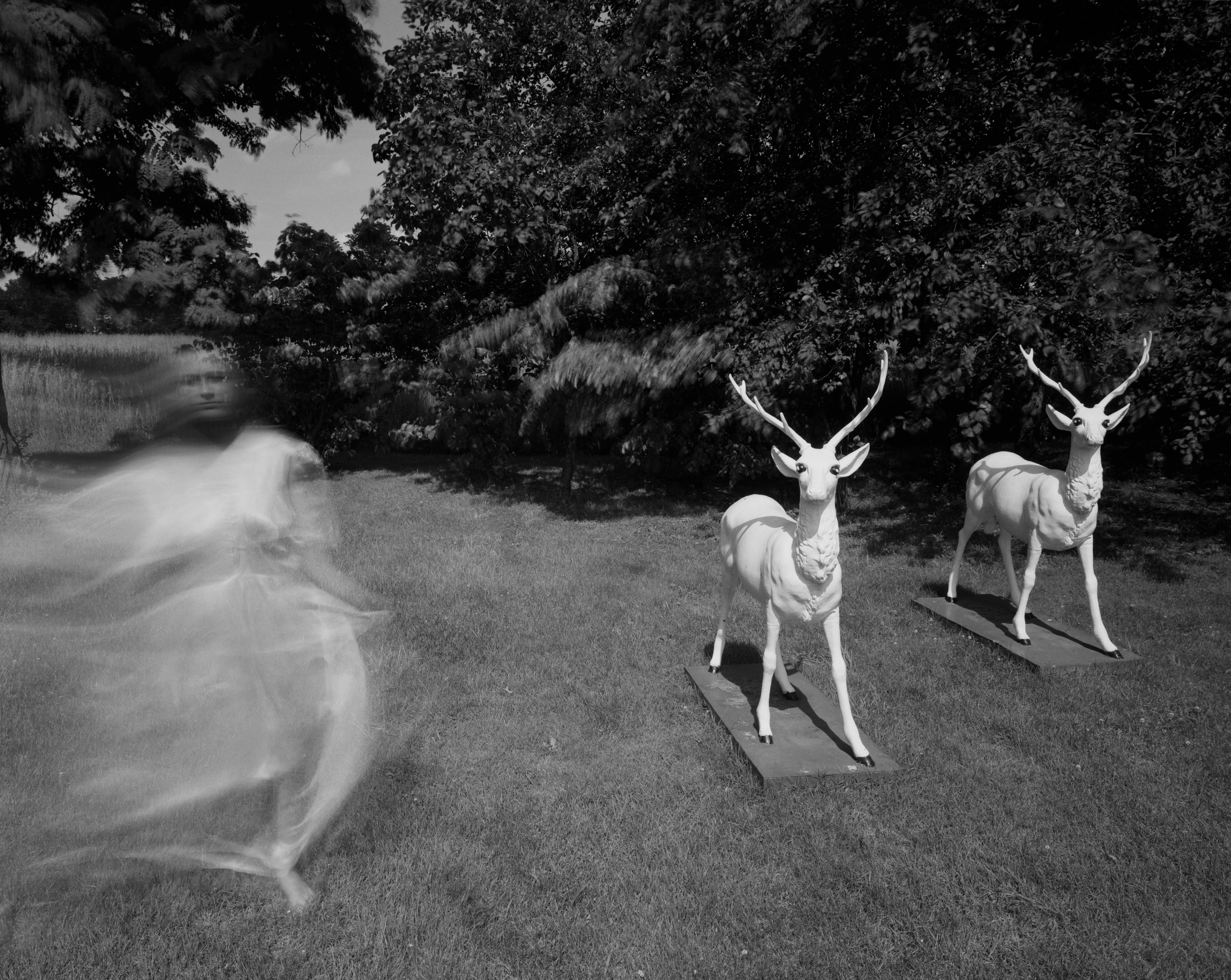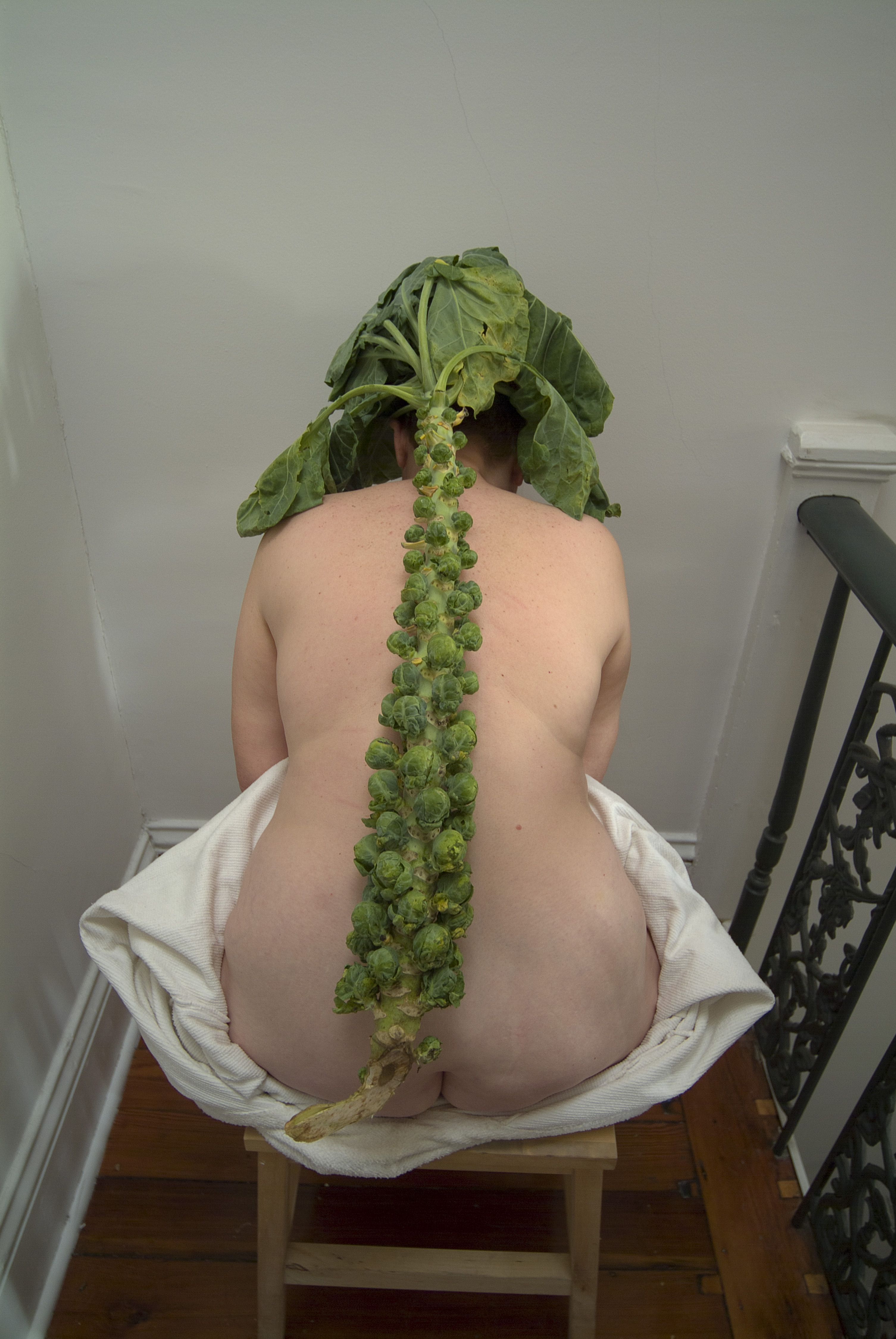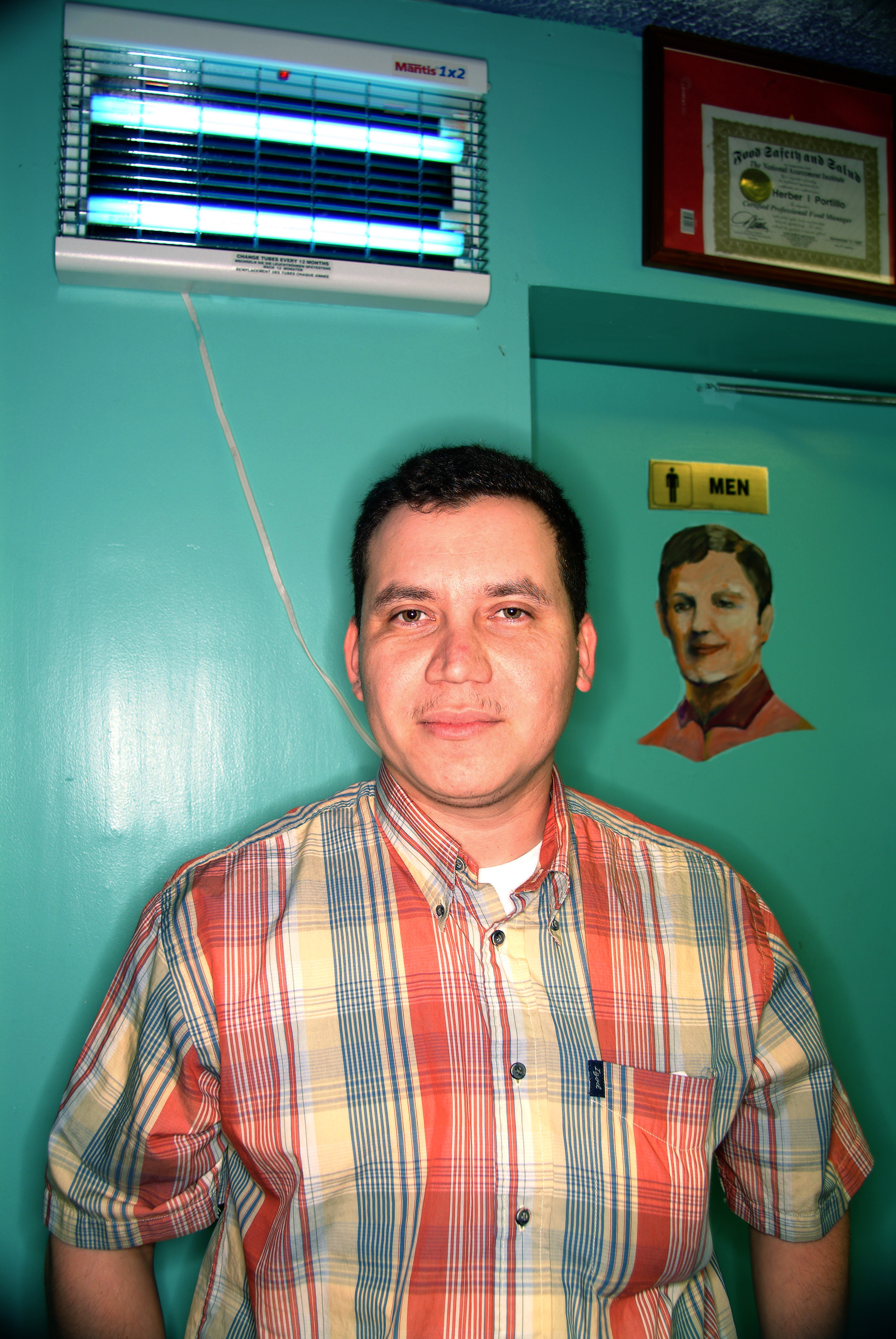Welcome to the first installment of Doin’ Work: Flash Interviews with Contemporary Photographers. Here, I celebrate the photographers who inspire me every day and offer an easily digestible bite of their work.
This week, we have Michael Northrup. He’s an underappreciated artist (he just graced the cover of VICE magazine’s April issue), and in short, we think you should appreciate him. Born in 1948, Northrup has been putting out funny and colorful photos since the 1970s, near the end of the Vietnam War.
Videos by VICE

Northrup as a child
Endlessly ironic in his work, Northrup says his family, who was “great at extracting humor out of tragedy,” has always inspired him and given him “a way of seeing.”
“For me, creating images,” he has said, “is all about my daily life, those meaningful pictures I’m able to extract from it, and the personal vision I bring to those visual narratives.”
At 68, he’s still doing what he’s always been doing: trying to stay relevant. He shoots everything, now, on his smartphone. Plus, he remains refreshingly candid. He doesn’t really care about where he lives. He thrives off boredom. He admits that he could run out of ideas at any moment. But, thankfully for us, he hasn’t yet.
The interview below has been edited for length and clarity.
VICE: Where do you live and work, and how does it impact your photography?
Michael Northrup: I left my teaching career in Shepherdstown, West Virginia, to go commercial and moved 60 miles to Baltimore around 1990. David Plunkert, a former outstanding design student from Shepherd College who’s now a well-known illustrator, ushered me into the cutting-edge design firm where he worked, and I was able to quickly build a competitive commercial portfolio that dovetailed with my personal fine-art work. If it weren’t for that student-teacher relationship, I probably wouldn’t have moved here. Other than that connection, I don’t think living here has impacted my work. I would be doing what I do no matter where I lived.
When and how did you get your start in photography?
The Vietnam War was raging. I was in my third year of undergrad, hating every minute of it, and my grades were dropping. I made a desperate move out of convention and took photography to see if it might spark something—anything—in me. My last term at Ohio University, I studied with Jack Welpott and Judy Dater in San Anselmo, California, for three mind-expanding months. Over the next few years, because of Jack, I was able to work with Frederick Sommer, Minor White, Cheri Hiser, and others. That cemented the deal for me. I was on the right track.
What compels you to pick up your camera?
At 68, it’s a challenge. I am not a bottomless pit of ideas. I don’t know how the Rolling Stones keep doing it. That said, I haven’t heard anything new from them in ages. Boredom usually works. The best motivators are seeing something compelling, working with whatever life gives me, and knowing that someone will see whatever I do, other than just me. I could use any camera I want, but now I only use the one on my S6 Galaxy Edge. It shoots raw! It fits in my pocket. It is incredibly sharp. Images are big. Life is good.
What are you working on now?
Staying relevant. I have two books out and want to put out at least two more. I have 40 years of work to pick from and a bunch of stuff few people have seen. I’m focused on publishing all of that, since that’d give me a much wider and longer-lasting audience than showing in galleries. I’m also having fun making circular images on an app on my smartphone. They’re made through tiling, and I enjoy the accidents and the references to the circular images in 19th-century landscapes and portraits.
If you had to explain your work to a child, how would you describe it?
I’d say I like to take funny pictures of people and things that have a little mystery to them. I want to make you ask questions.
Do you make a living as a photographer? If yes, please explain how. If no, tell me about your day job and how you balance photography with it.
Not much anymore. I stopped paying to show and begging for jobs years ago. So I don’t show much or get many jobs. I’m more interested in publishing. My brothers and I got just enough inheritance to keep the wolf from the door, so I don’t have to pay or beg anymore. I’m taking full advantage of it.
Show me the image you feel you’re best known for. What are your thoughts on it?
It would probably be this one. Steely Dan used it on the cover of the album Two Against Nature. It was the band’s first CD in 20 years, so it got a lot of press. I took the photo in 1977, of my first wife. She was an incredible muse for me, for ten wonderful and difficult years. I would love to do a book on my images of her. These deer are ornaments on a huge lawn of a small mansion in the country, alongside a small river in southeastern Ohio. At the time, I had a curiosity about transparent, blurred, distorted subjects. They give life to a static image, with a little mystery. The deer look animated in response to the blurred figure. I chose that angle so their black soulless eyes are looking into the camera.

What, if anything, frustrates you about photography?
Stock photography. Mediocrity. So much focus by galleries on the “now.” Graphic designers looking for talent on social media. I think that’s it. I like everything else.
Describe your working process.
My thought process is more perception than conception. I see it. I take it. I don’t travel to take images. They’re all at arm’s length, all woven into the fabric of my life. I work with what life gives me and from what I’ve learned along the way.
Describe the approach you take when establishing a relationship with a subject.
It usually starts with “don’t move” and finishes with “thanks.”

What do you think of the vast sea of online photography? What’s your approach for standing out?
Well, it’s kind of wonderful and horrible at the same time. I have no approach to standing out. That’s like saying, “What do I have to do to get an A?” (I had a young photo student actually ask me that). You follow a path with heart and do your best. That’s all that one should be concerned with. People know when you’re having fun, and they sure as hell know when you’re not. It all shows in the work. Make it shine.
What are you most proud of in terms of your work?
I try not to be proud. It’s not like I’m saving lives. I can tell you what I love about it, and it’s a big love. That it’s been such a great guide for me in this life. And it’s allowed me to tap something in me that I had no idea existed until I became serious with the medium. It’s been, and still is, a joy to create. It has helped me to bond with my environment and the people in my life in the most playful manner one can imagine.
What are you doing when you’re not making pictures?
Everything else. In the 90s, it was sailing on the bay. The slip was $2,000 a year, not to mention the cost of upkeep, so that was eventually out. In the early-to-mid 2000s, it was flying giant-scale gas airplanes, fulfilling a childhood dream to be a professional pilot. After two big ones went down, it became obvious they all come down at some point, and I didn’t feel I had resources to throw to the ground. Now I use a motorized Trikke to go on excursions, both urban and rural. I always have my Galaxy with me.
What do you think the future of photography might look like?
More of everything you see going on now. More powerful devices and more powerful applications. More 3D. More sensory immersion. (Whatever happened to holograms?) Everyone in the world having the ability to make images. We’re almost there.
Name three contemporary photographers who blow your mind.
Joel-Peter Witkin, and that’s about it. I like many others. There’s a lot of news and editorial images that sometimes blow my mind, because of the elements that make an interesting and effective image combined with deep reportage. But the “Blow Your Mind” category goes to J.P.W., for sure. I pretty much stopped buying photo books in the 90s.
The most important question of all: dogs or cats? Why?
Yes. We have three cats and a dog, and I do love them. But here’s the thing. Dogs eat poop, then puke it up in the house. Cat pee is as bad as alien’s blood. They put their sphincters on your pillow. They pee on your bed. They puke anywhere. They walk on or eat your stuff. They either bark incessantly at the doorbell and sweeper, or keep you and the dog up with nocturnal shenanigans. But they love you.















You can find Tara Wray’s work on her website.
More
From VICE
-

Screenshot: Bethesda Softworks -

Screenshot: YouTube/Nintendo of America -

Collage by VICE -

Collage by VICE
